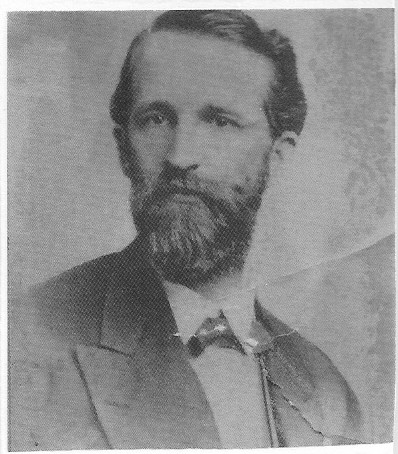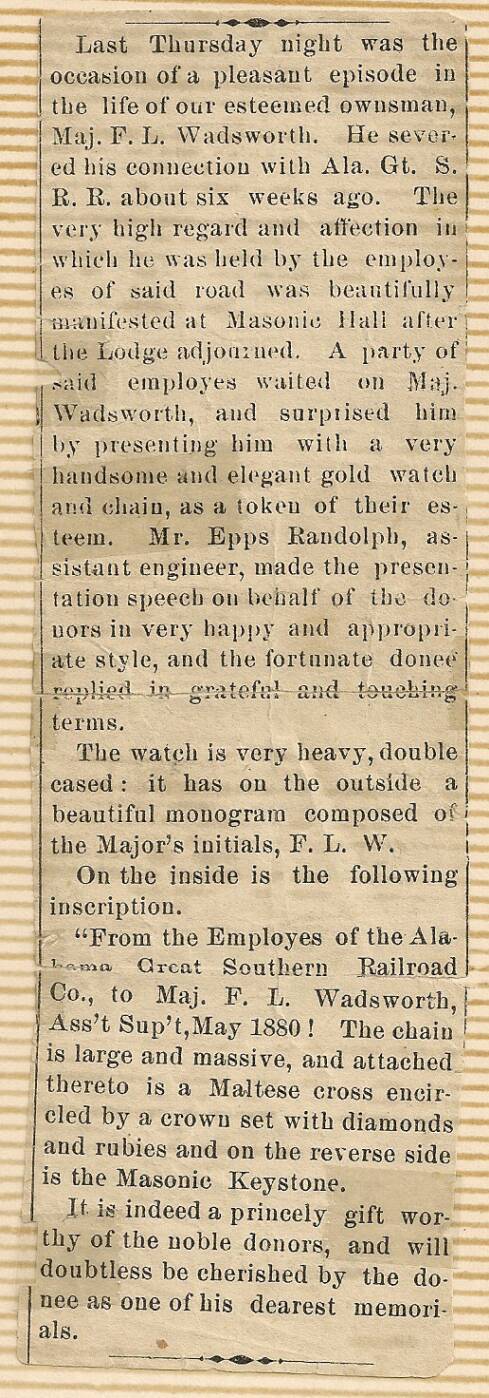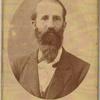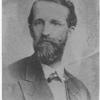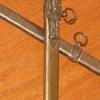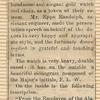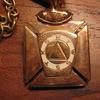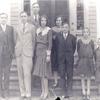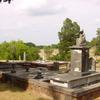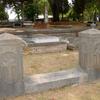Francis Livingston Wadsworth II
(1843-1884)
Master Mason within the "Free and Accepted Masons" Fraternity
"K.S.H.T.W.S.S.T."
The above letters are usually seen in a circular fashion inside the 'keystone' symbol and this symbol is from the capitular degrees of free masonry, more commonly known as a Royal Arch Mason. This symbol is that of a man that was a Royal Arch Mason as well as a Master Mason who was active in his local Masonic Blue Lodge. Although the highest degree that a "Free and Accepted Mason" can attain is that of a 'Master Mason', there are other appended organizations and the 'Royal Arch Mason' is one of them. Initially, there are three degrees that an individual is required to attain to become a Mason; 'Entered Apprentice', 'Fellow-Craft' and then he is raised to 'Master Mason'.
Although "Master Mason" is the highest degree in the "Free and Accepted Masons" fraternity, there are other appended organizations which require that the member first be a "Master Mason" in order to participate. In each of these appended organizations, the Master Mason is instructed in additional degrees. Some of these appended organizations are; York Rite Mason, Scottish Rite Mason and Shriner.
The "K.S.H.T.W.S.S.T." symbol indicates that the person had completed the cryptic degrees of the York Rite and was a "Royal Arch Mason" in the York Rite Degrees of Freemasonry.
~~~~~~~~~~~~~~~~~~~~~~~~~~~~~~~~~~~~~~~~~~~~~~~~~~~~~~~~~~~~~~
A "Royal Arch Mason" of the York Rite would usually have the Masonic emblem prominently displayed and would also bear the inscription "K S H T W S S T" within a circle on the inside of the 'keystone' symbol. An example of this is shown below which was attached to the watch fob given to Major Francis L. Wadsworth in May 1880 as a retirement gift by a party of employees from Alabama Great Southern Railroad Company.
Read newspaper article (below) which tells the story about this Masonic Keystone that was given to Major F. L. Wadsworth, May 1880.
Major Francis L. Wadsworth was a civil engineer and first established himself in that profession. Francis was born in Montgomery, Alabama. He served in Co. F, 60th Regiment, Alabama Infantry attaining the rank of Major. After the war he moved to Birmingham, Al. where he became Secretary, Treasurer of Debarbalaben Coal and Iron. He also worked and retired from his job as Assistant Superintendent with the Alabama Great Southern Railroad in early 1880.
The very high regard and affection in which he was held by the employees of Ala Great Southern Railroad was beautifully manifested at the Masonic Hall during May 1880 after the Lodge adjourned. The party of said employees waited on Major Wadsworth, and surprised him with a very handsome and elegant gold watch and chain (watch fob chain & Masonic Keystone photos are shown throughout this page) as a token of their esteem. The watch is very heavy, double cased with the initials F.L.W. monogrammed on the outside. The chain is large and massive, and attached thereto is a Maltese Cross encircled by a crown set with diamonds and rubies and on the reverse side is the Masonic Keystone.
This "Keystone" symbol which has the letters "K.S.H.T.W.S.S.T." in a circular fashion is from the capitular degrees of free masonry, more commonly known as a Royal Arch Mason. This symbol is that of a man that was a Royal Arch Mason as well as a Master Mason who is active in his Masonic Blue Lodge.
Major F.L. Wadsworth's brother, William Dwight Wadsworth (1846-1891) was a member of the Masonic Fraternity in 3rd degree and had been Grand Master of the State of Alabama.
Masonic Knights Templar
Masonic Knights Templar
Photograph of my Great Grandfather's ,Major Francis Livingston Wadsworth (1843-1884), gift from his employees at the Alabama Great Southern Railroad; May 1880 during a surprise retirement party.
This photograph is of a Masonic Knights Templar symbol showing a cross within a crown inside a Maltese cross, which has the Latin phrase, "in hoc signo vinces." The phrase means "in this sign you shall conquer" and was used by Constantine as a military motto in the early 4th Century. The phrase was also used by the original Knights Templar military order that was founded during the Crusades. The Freemasons began using Templar rituals and symbols in the late 1700's.
Knights Templar legends and myths are quite popular in movies and books such as The Da Vinci Code, Foucault's Pendulum, National Treasure, and Indiana Jones and the Last Crusade. Some also see the parallels between the Jedi Knights of Star Wars and the Knights Templar military order.
Mason's Tokens
There exist many tokens to illustrate masonic involvement in much of our lives. A keystone is placed in the center of an arch which preserves the others in their places, and secures firmness and stability to the arch ("The Royal Arch"). It is the custom of Operative Masons to engrave their mark in
the center of the keystone; a tradition still carried forward to this day. Mason's tokens are everywhere. You only need to see through different eyes to recognize them.
The meaning of K.S.H.T.W.S.S.T. is esoteric and cannot be explained
here. You must ask a Mason; however, you shall receive no answer. To
do so, would be to disavow his pledge. It will not be me. (If I tell
you, I would have to kill you.) Let it suffice, Major Francis Livingston Wadsworth is known as a Freemason by this token. York Rite Masons remember the order of the lettering by this cute little verse, "King Solomon Had Twelve Wives Some Say Twenty." It identified a Freemason who was a Knight Templar in the York Rite Degrees of Freemasonry.
The Masons have their roots in the Middle Ages when various Christian
organizations were formed to shepherd pilgrims to and from the Holy
Land. The Masons exist today in every corner of the world as a
Christian, philanthropic organization.
Major F. L. Wadsworth (1843-1884) my Great Grandfather: Photo Gallery showing his Masonic Sword, watch fob, etc. is shown at bottom of this page:
Wadsworth Photo Gallery
Click on the thumbnails to enlarge for viewing




